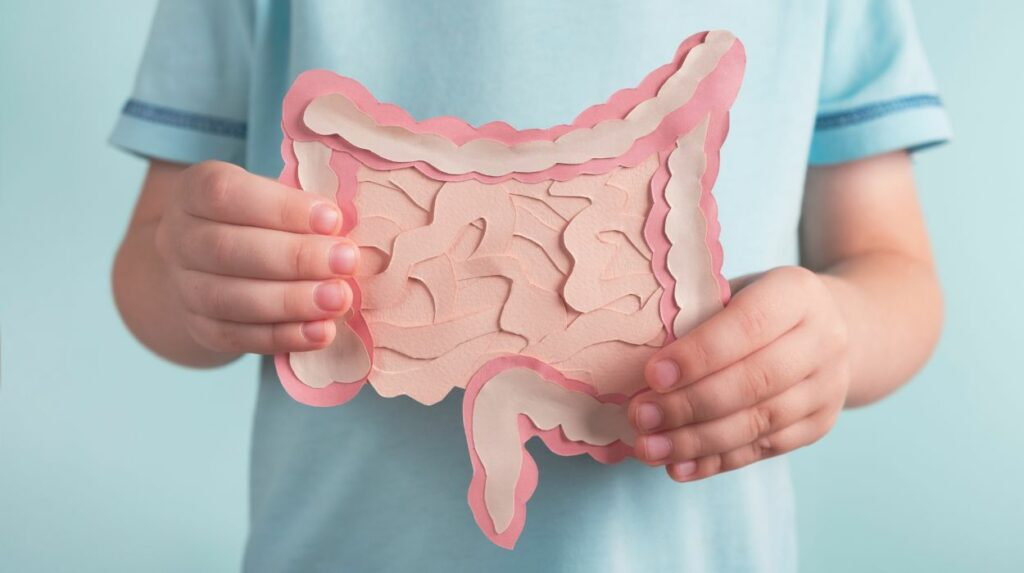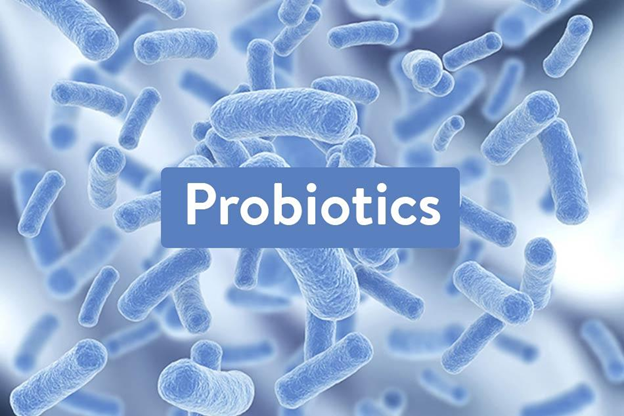 English
EnglishNutrition for supporting gut health in the elderly

Nutrition to improve gut health in the elderly
Targeted nutrition interventions to support digestive health in older adults not only address uncomfortable symptoms such as bloating or constipation, but also lay the foundation for optimal nutrient absorption, a stronger immune system, and sustained energy. As we age, the digestive system faces multiple challenges: reduced enzyme activity, slower intestinal motility, and, importantly, an imbalance in the gut microbiota.
The true key to a healthy digestive system lies not only in what we eat, but in maintaining a stable and diverse gut microbiome. Restoring balance to this microbial ecosystem through targeted nutrition strategies is considered one of the most effective and sustainable approaches. This article will explore those strategies in depth — from smart fiber choices to the essential role of probiotics and prebiotics in building a resilient digestive foundation.
Common gastrointestinal issues in the elderly
The digestive system, often referred to as the body’s “second brain” plays a central role in nutrient absorption and immune regulation. However, the natural aging process brings profound changes to both the structure and function of the gut. Two of the most notable and impactful changes include a decline in digestive efficiency and an imbalance in the gut microbiota, which together contribute to a wide range of common health issues in older adults.
Natural decline in digestive function
The aging process affects every stage of digestion, from the mouth to the colon. Reduced stomach acid secretion (hypochlorhydria) becomes more common, lowering the body’s ability to break down proteins and absorb key micronutrients such as calcium, iron, and vitamin B12. At the same time, motility in the esophagus and small intestine tends to slow, causing food to move more sluggishly through the digestive tract. The pancreas may also produce fewer essential digestive enzymes (amylase, lipase, and protease). Together, these changes lead to common symptoms such as bloating and indigestion after meals, and significantly increase the risk of chronic constipation—one of the most frequent digestive issues in older adults.
Imbalance of the gut microbiota

Imbalance of the gut microbiota also affects digestive capacity
Alongside functional changes, the gut microbiota, a complex ecosystem containing trillions of microorganisms, also undergoes significant shifts with age. One of the most notable changes is a marked decline in microbial diversity. Beneficial strains such as Bifidobacteria, which play an important role in maintaining intestinal barrier integrity and producing vitamins, decrease substantially over time. As these protective bacteria diminish, conditions become favorable for the overgrowth of opportunistic or pro-inflammatory microbes. This imbalance, known as dysbiosis, not only contributes to digestive issues but also fuels chronic inflammation, weakens immune function, and increases the risk of age-related chronic diseases.
3 essential roles of the gut microbiota
Beyond its basic function in digestion, the gut microbiota has far-reaching influence on several fundamental physiological systems. Among these, three key roles stand out:
Regulation of immune function
Around 70–80% of the body’s immune cells are located in the gut-associated lymphoid tissue (GALT). Within this environment, the gut microbiota plays a crucial role in “educating” and modulating the immune system. Through constant interaction, these microorganisms help the immune system distinguish between harmless dietary antigens and true pathogens. This process promotes immune tolerance, reduces the risk of allergic and autoimmune responses, and ensures that inflammatory reactions stay properly regulated. When the microbiome becomes imbalanced, this “training” process is disrupted, potentially resulting in an immune system that is either overactive or insufficiently responsive.
Optimization of nutrient absorption and energy metabolism
The gut microbiota plays a pivotal role in optimizing the breakdown and absorption of nutrients. The human body does not possess adequate enzymes to digest certain complex carbohydrates, especially dietary fiber. Instead, gut microbes ferment these fibers, producing short-chain fatty acids (SCFAs). SCFAs are not only the primary energy source for intestinal epithelial cells, helping maintain a strong gut barrier, but they also exert numerous beneficial effects throughout the body. In addition, the gut microbiota participates in the synthesis of essential vitamins that the body cannot produce sufficiently on its own, such as vitamin K and several B-group vitamins, including biotin and folate.
Influence on mental health through the gut–brain axis
The gut microbiota continuously communicates with the central nervous system through a complex network known as the gut–brain axis. This bidirectional communication occurs via multiple pathways, including the vagus nerve, immune signaling, and metabolites produced by gut bacteria. Notably, the gut microbiota plays a key role in the synthesis and regulation of neurotransmitters. Approximately 90% of the body’s serotonin, an essential neurotransmitter involved in mood regulation and sleep is produced in the gut. Therefore, disruptions in the gut microbial balance can influence brain function and contribute to mood disorders such as anxiety and depression.
Probiotics and Prebiotics: The scientific foundation for restoring gut balance
To intervene and restore balance within the gut microbiome, modern science focuses on two complementary strategies: introducing beneficial live microorganisms (probiotics) and supplying the nutritional substrates that support their growth (prebiotics). Understanding the definition and mechanisms of each approach is essential for applying them effectively.
Probiotics: Introducing beneficial microorganisms

Probiotics support gut health
According to the consensus definition by the International Scientific Association for Probiotics and Prebiotics (ISAPP), probiotics are live microorganisms that, when administered in adequate amounts, confer health benefits to the host. They serve as a direct intervention to restore balance within the gut ecosystem, particularly after disruptions such as antibiotic use or gastrointestinal infections.
Mechanistically, probiotics compete with harmful microbes for space and nutrients, helping to limit the growth of pathogenic organisms. They also produce antimicrobial compounds, such as bacteriocins, that suppress unwanted bacteria. Additionally, probiotics enhance the integrity of the intestinal lining by promoting mucus production and strengthening tight-junction proteins, which together help prevent toxins and pathogens from entering the bloodstream.
Prebiotics: Supplying selective fermentable substrates
According to ISAPP, prebiotics are defined as substrates that are selectively utilized by host microorganisms and confer health benefits. Essentially, prebiotics serve as a specialized “fuel source” that bypasses digestion in the small intestine and reaches the colon intact. There, they act as a preferred nutrient supply for beneficial bacteria, particularly Bifidobacteria and Lactobacilli.
This selective nourishment enables these beneficial microbes to grow and sustain themselves, while also stimulating the production of short-chain fatty acids (SCFAs) and other beneficial metabolites. These SCFAs contribute to a healthier intestinal environment and support anti-inflammatory activity throughout the body.
The synergistic power of a Synbiotics system
A synbiotic system represents a strategic combination of probiotics and prebiotics within the same product or nutritional approach. This pairing has been shown to deliver superior benefits compared to using either component alone. The reason is simple: probiotics supply beneficial bacteria, while prebiotics provide the selective fuel these microorganisms need to thrive, multiply, and function effectively once they reach the gut environment. In essence, synbiotics work through a dual-action mechanism not only restoring the population of beneficial microbes but also ensuring they have the ideal conditions to establish, persist, and exert their positive effects. This makes synbiotics a powerful and sustainable strategy for rebalancing and strengthening the gut microbiome.
Nutrition principles to support gut health in the elderly
Building on the scientific foundation of probiotics and prebiotics, experts recommend nutrition strategies that help rebalance the gut microbiome, improve digestive function, and promote overall health in older adults.
Prioritize foods naturally rich in Probiotics
The first principle is to introduce beneficial microbes directly through daily nutrition. Naturally fermented foods are an abundant and accessible source of probiotics. Yogurt and kefir are considered top options. When choosing these products, it is important to read the label to confirm the presence of live and active cultures, often stated as “contains live cultures” or “contains probiotics.” Regular consumption of such foods helps sustain a healthy community of beneficial bacteria in the gut.
Increase intake of prebiotic-rich foods

Prebiotics are food for beneficial bacteria and help them grow
Alongside adding probiotics, nurturing the existing gut microbiota by supplying sufficient prebiotics is equally essential. Foods rich in prebiotics include garlic, onions, leeks, asparagus, bananas, oats, apples, and legumes.
The core principle here is to ensure adequate intake of dietary fiber, especially soluble fiber (prebiotics), which serves as a preferred energy source for beneficial bacteria. However, meeting fiber requirements can be challenging for older adults due to issues such as difficulty chewing, swallowing, or reduced appetite, increasing the risk of fiber deficiency in daily meals.
In this context, scientifically formulated nutritional solutions that provide fiber in a convenient and easily absorbed form become highly valuable. Nutricare Gold, developed by Nutricare in collaboration with the Nutricare Medical Nutrition Institute – USA (NMNI-USA), delivers soluble fiber FOS, functioning as a prebiotic to nourish and stimulate the growth of beneficial bacteria, thereby supporting digestive health and helping prevent constipation.
Beyond digestive support, Nutricare Gold is designed to address other key health concerns commonly seen in older adults. The product provides high-quality protein to sustain and rebuild muscle mass, an essential factor in maintaining mobility. It is also enriched with a trio of Calcium, Vitamin D3, and Vitamin K2, critical nutrients for bone strength and effective osteoporosis prevention. In addition, its antioxidant system (Vitamins A, C, E & Selenium) strengthens immunity and shields the body from harmful free radicals.
Overall, Nutricare Gold not only helps improve digestive health but also offers a comprehensive nutritional solution that promotes immunity and enhances overall well-being in older adults.
Limit foods that are harmful to the intestines
Finally, a comprehensive strategy must also include minimizing factors that harm or disrupt the gut microbiome. Diets high in refined sugar, saturated fats, and processed foods have been shown to encourage the growth of harmful bacteria, reduce microbial diversity, and create an unhealthy gut environment. Therefore, limiting the intake of sweets, sugary beverages, fast food, fried foods, and processed meats is an essential component of a gut-supportive eating pattern.
Conclusion
Gut health is no longer a secondary concern, research has firmly established it as a foundational pillar that shapes immune function and energy metabolism, particularly in older adults. Supporting the gut microbiome through a diet rich in probiotics and prebiotics is not only a way to address digestive discomfort but also a holistic preventive strategy for long-term health.
Putting these principles into practice does not require dramatic lifestyle changes. Instead, it comes down to intentional daily choices, where every meal becomes an opportunity to restore balance to the gut ecosystem. This approach represents a meaningful investment in strengthening immune defenses, enhancing nutrient absorption, and maintaining an active, healthy life.
References:
|
